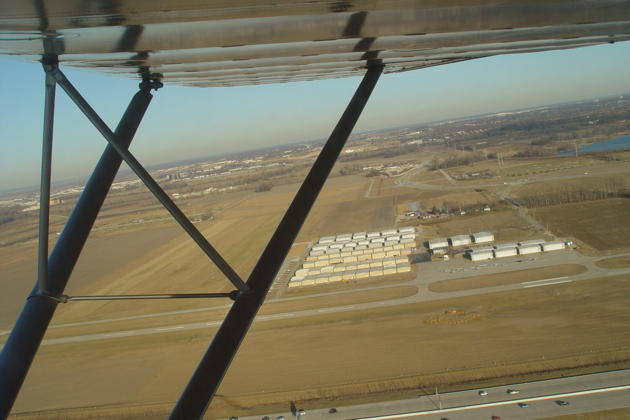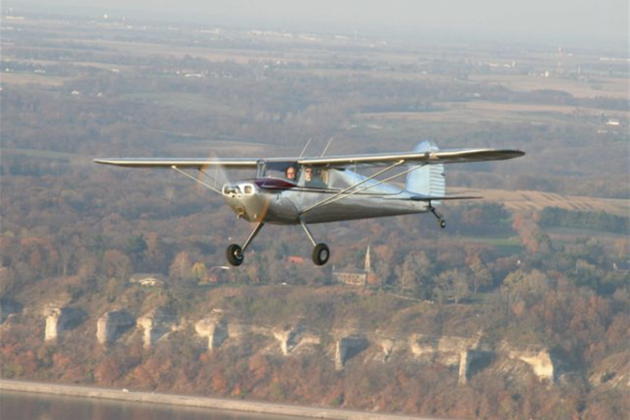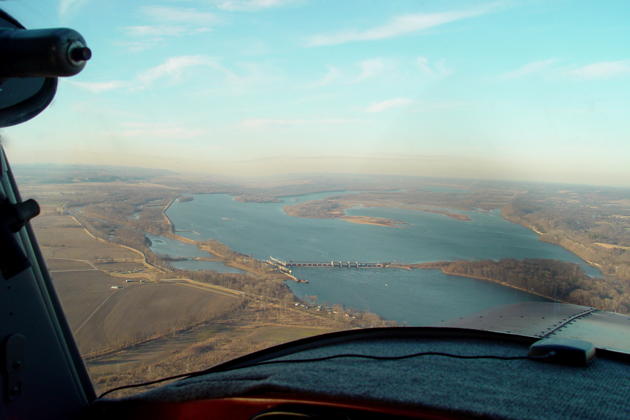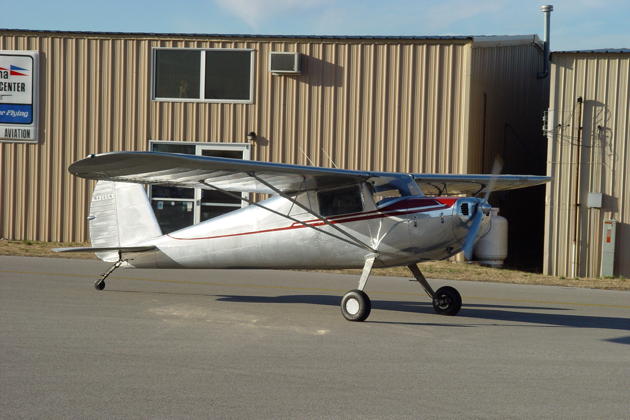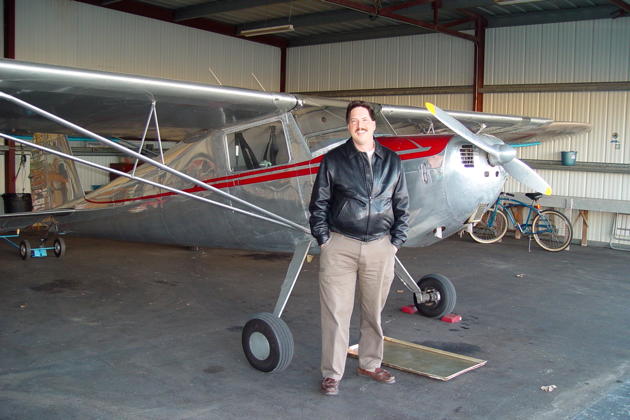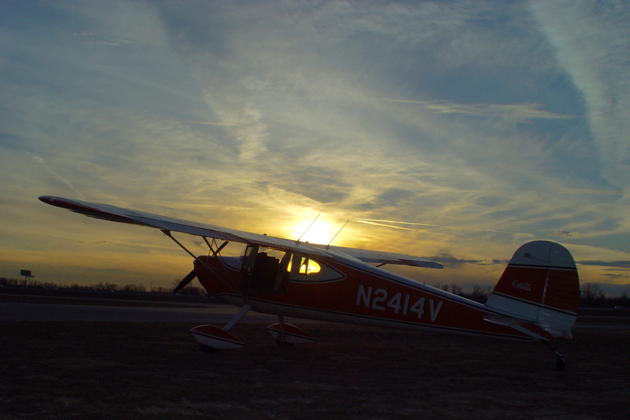FlightLog Archive
∟Aircraft Flown
Flying a Classic Cessna 120 - Jan 2006
One of the joys of the aviation community is the chance to escape into the skies in a classic bird that's aged gracefully over the years.
While in St. Louis for business, the forecast for a few days in January looked promising, especially after the weeks of rain and overcast skies in the Northwest. I had stopped by the Creve Coeur airport to check out their large number of classic general aviation aircraft in 2005. I had also talked with a co-worker, Tim Bischof, about his classic Cessna 120, N4266N, with an invitation to fly from Creve Coeur if we could ever arrange it.
Creve Coeur Airport, formerly known as Dauster Flying Field, is home to some very unique aircraft. The Historic Aircraft Restoration Museum houses around 60 antique or restored birds. In addition to the museum, which is available for tours, the private hangar owners proudly maintain a wide variety of special airplanes, including everything from Tim's Cessna 120 to Wacos to warbirds. The airport also holds the annual American Waco Club Fly-in, which attracts dozens of restored Wacos to the field.
I met Tim on Thursday morning at work, and we agreed to meet in the early afternoon for a quick flight in the 120 and an aerial tour of the river area to the west of St. Louis. Tim arrived at Creve Coeur before me, pre-flighted his Cessna 120 and shot a few patterns. I arrived around 3:30, just as Tim was taxiing in, with the lowering sun reflecting off the polished aluminum of his beautiful 1947 Cessna 120.
I jumped in the right seat, and got reacquainted with the 'friendly' shoulder room in the early Cessnas. The original Cessna 120s were delivered without an electrical system. Tim's 120 now has one, and Tim has made a few nice additions to the basic 120 instrument panel, with a modern radio and yoke-mounted GPS system. Tim has also added a convenient (light) baggage area behind the seats.
Tim cranked the already warm engine and we taxied to runway 16 at Creve Coeur, and sequenced a run-up and takeoff in among the other pilots enjoying the beautiful winter day. Even with a full tank of gas and our 'not light' weight, the cool temperatures and a direct headwind provided for a nice climbout on takeoff. We departed the airport traffic to the north, and I got a feel for the 120 while heading to the river area northwest of St. Louis.
The visibility was outstanding on this clear and crisp day, and we continued north to overfly the Mississippi River as it meandered along the Missouri-Illinois border. I was surprised how far west Illinois intruded into Missouri, especially since we were well west of the St. Louis environs. Tim and I talked a bit about the flooding that periodically hits this area, and the multiple times the Creve Coeur airport has been inundated with water.
The 120 has typical Cessna flight characteristics, and is easy to fly with nicely balanced flight controls. I was surprised how little rudder was needed in turns, and how stable the airplane flew when correctly trimmed. With fixed gears and no flaps, the Cessna 120 is a basic, simple, easy-to-fly classic.
Tim pointed out the perpendicular grass runways as we circled over the home and manmade lake owned by one of the Busch family members. It looked like a great place to have a personal fly-in. We cruised back south, enjoying the great visibility and setting sun. Tim entered the pattern from upwind, trying to sequence in between folks shooting extended 'bomber patterns', and executed a smooth taildragger landing into the helpful direct headwind. Our landing roll was measured in feet, and we taxied back to Tim's hangar to nest his 120 next to another 120, this one being a 1946 model.
I can't think of a better way to spend a sunny winter afternoon. Thanks, Tim.
 KASPRZYK
KASPRZYK
